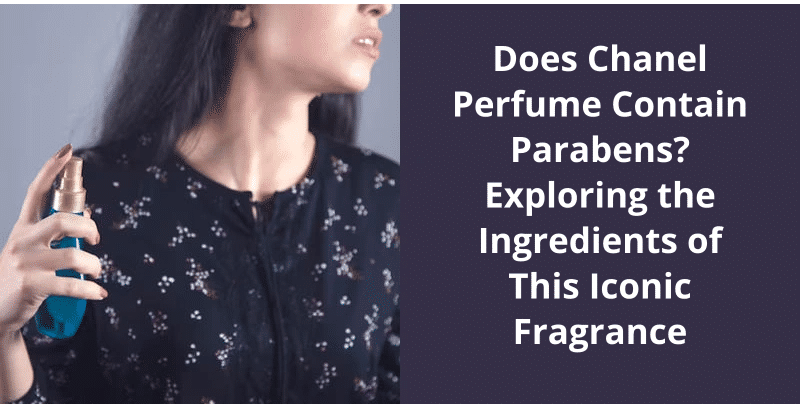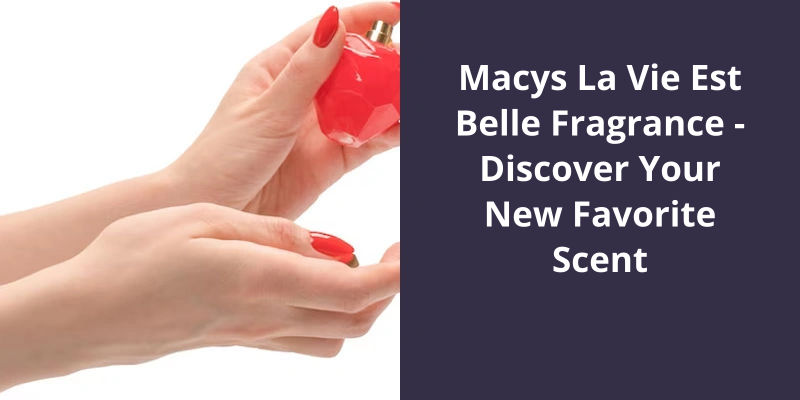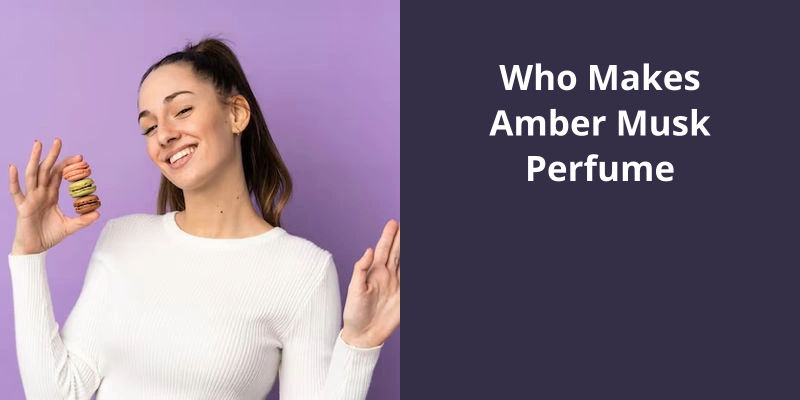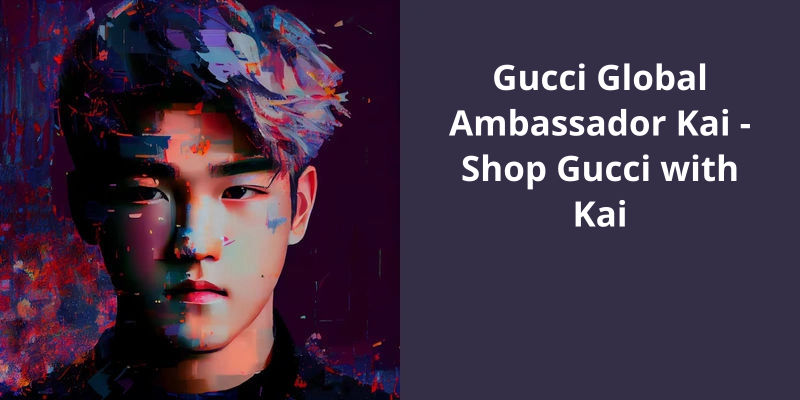Chanel perfume does not contain parabens. Chanel, as a brand, maintains a high commitment to the quality and safety of their products, ensuring that they meet rigorous safety standards and regulations. They use a variety of ingredients in their perfumes, all thoughtfully selected and sourced to create their iconic fragrances. However, Chanel avoids using parabens, a type of preservative often used in cosmetics, due to potential health concerns associated with them. So, if you’re looking for a luxurious fragrance that’s also paraben-free, Chanel perfume could be an excellent choice.

Where Does Chanel Get Their Materials for Perfume?
Grasse is a picturesque town located in the south of France and is renowned as the worlds perfume capital. For over a century, the local farmers have been cultivating flowers such as jasmine, rose, and tuberose, which are the main ingredients in Chanels perfumes. The farmers use traditional farming methods, and the flowers are hand-picked to preserve their fragrance and quality. The production of these essential oils is a delicate process that requires a meticulous approach and can take several weeks.
Chanel perfumes are made from the highest quality ingredients sourced from all over the world. The company has long-standing relationships with it’s suppliers, and it takes great care in ensuring their traceability and sustainability. The materials used in Chanels perfumes come from a variety of sources, including plants, fruits, and wood. For example, Chanel No. 19 contains galbanum, a resin extracted from a Persian plant, while Chanel Allure Homme Sport features Haitian vetiver, a type of grass used in perfumery.
Chanel has it’s own production facilities in Grasse, where the companys perfumers create new fragrances and test them. These facilities feature advanced technology and innovative techniques that allow the companys experts to push the boundaries of the perfume-making process. Chanel also has a team of “noses” or perfumers who work on developing new fragrances and refining existing ones.
Chanels commitment to quality and sustainability is evident in the way the company sources it’s materials. For example, the company uses a process called high-pressure carbon dioxide extraction to create it’s jasmine absolute, which uses less energy than traditional methods and produces a higher yield of fragrant oil. Chanel also works with local communities to promote sustainable farming practices and ensure that the farmers are paid fairly for their work.
These farmers have been supplying Chanel with materials since the companys inception, and their hard work and expertise have helped create some of the most iconic fragrances in the world.
Chanel’s Sustainability Initiatives and How They Promote Ethical Sourcing and Production Practices
Chanel is committed to sustainability and ethical practices in sourcing and production. This includes using environmentally-friendly materials and reducing waste, as well as ensuring fair working conditions and fair pay for workers. By promoting these practices, Chanel aims to minimize their impact on the environment and support communities involved in their supply chain.
While Chanel No. 5 has remained an iconic fragrance for nearly a century, there’s been a growing interest in natural and organic perfumes. However, it’s important to note that Chanel No. 5 was not designed to be a natural perfume. In fact, it was the first synthetic perfume, made with innovative techniques and ingredients that have become staples of modern perfume making. So, is Chanel No. 5 natural? The answer is no, but it’s revolutionary formula has paved the way for both synthetic and natural perfumes alike.
Is Chanel No. 5 Natural?
Chanel No. 5 has a long and fascinating history that dates back to 1921 when Gabrielle “Coco” Chanel commissioned a perfume that would represent the modern woman. This perfume quickly became iconic because it was the first fragrance that launched a brand and the first perfume that broke the mold of floral arrangements. In it’s original formulation, Chanel No. 5 contained more than 80 unique ingredients, which included jasmine, rose, ylang-ylang, civet, and benzoin. The perfume was a delicate and complex blend that exuded femininity, sensuality, and modernity.
Despite it’s original composition, Chanel No. 5 isn’t considered a natural perfume. As mentioned, it was the first synthetic perfume to be created, and it’s synthetic nature has been the subject of controversy. A synthetic fragrance may not be directly derived from nature, but it can still evoke natural smells, such as musk, sandalwood, and vanilla. In the case of Chanel No. 5, the use of synthetic aldehydes was groundbreaking because it allowed the perfume to have a unique and long-lasting staying power that natural sources couldn’t replicate.
The development of synthetic fragrances opened new doors for the fragrance industry because it allowed perfumers to create smells not found in nature. The use of synthetic chemicals allowed for a wider range of scents and the ability to replicate smells that were previously unattainable. Synthetic perfumes have become popular among customers because they maintain a consistent fragrance, tend to be longer-lasting and are often cheaper than natural formulas.
In recent years, there’s been an increase in interest in natural fragrances. Many consumers are becoming more aware of the potential health risks associated with synthetic fragrances, such as allergic reactions and skin irritations. Consequently, the perfume industry has seen a shift toward natural fragrances with a focus on using essential oils and botanical extracts. Some fragrance houses have even begun to label their products as naturally-derived. However, it’s important to note that many of the ingredients in natural fragrances do undergo some level of processing or extraction.
While the perfume isn’t considered “natural,” it’s legacy as one of the first synthetic perfumes paved the way for innovation in the fragrance industry. Natural and synthetic fragrances both have their benefits and drawbacks, and ultimately the decision between the two comes down to personal preference. Regardless of whether a fragrance is natural or synthetic, the power of scent is undeniable, and the experience of wearing a fragrance can be transformative.
The Potential Health Risks Associated With Synthetic Fragrances and How to Identify and Avoid Them.
This article focuses on the potential health risks of using synthetic fragrances and provides tips on how to identify and avoid them. It’s essential to understand how these fragrances affect our health and what steps we can take to protect ourselves from these harmful chemicals.
Source: Chanel No. 5
Chanel has always been a leading brand when it comes to innovation and trendsetting in fashion and beauty. Recently, the luxury brand has also turned it’s attention towards sustainability and eco-friendliness, an area where the brand has taken significant strides in the past few years. Chanel has now introduced N°1 de Chanel, a range of eco-responsible beauty products that promises to be both gentle on the skin and the environment. With it’s use of naturally derived ingredients, including a high percentage from the camellia flower, the line is a testament to Chanel’s commitment to sustainable beauty.
Is Chanel Beauty Eco Friendly?
The launch of N°1 de Chanel marks a significant step forward for the luxury fashion brand in terms of sustainability. Chanel has committed to using only sustainably sourced raw materials in their products by 2030, and the N°1 de Chanel line is a major milestone in this effort. The use of natural ingredients, particularly those derived from the camellia flower, also adds an element of luxury to the line that’s in keeping with the brands high-end reputation.
One of the key benefits of using natural ingredients in cosmetics is that they’re gentler on the skin than synthetic chemicals. Many people with sensitive skin or allergies find that natural products are more tolerable than traditional cosmetics, which may contain harsh ingredients that can cause irritation or inflammation. Chanels decision to focus on natural ingredients in their N°1 de Chanel line reflects this growing trend towards more gentle and eco-friendly beauty products.
In addition to the use of natural ingredients, Chanel has also made significant efforts to reduce the environmental impact of their packaging. The N°1 de Chanel products are packaged in glass bottles and jars, which are infinitely recyclable, and all of the paper used in the packaging is sustainably sourced. Chanel has also implemented a program to recycle used packaging from their customers, further reducing the environmental impact of their products.
By prioritizing natural ingredients and sustainable packaging, the brand is setting an example for others in the industry to follow. As consumers become increasingly mindful of their environmental impact, it’s likely that well see more and more brands follow Chanels lead in creating sustainable and eco-friendly beauty products.
The Use of Sustainable and Ethical Practices in Chanel’s Ingredient Sourcing Process
- Chanel sources ingredients from sustainable and ethical suppliers.
- They prioritize suppliers who use responsible farming and harvesting methods.
- Chanel also works to reduce waste and use eco-friendly packaging in their products.
- They’re committed to reducing their carbon footprint and have implemented sustainable practices in their production facilities.
- Chanel is transparent about their ingredient sourcing process and regularly shares updates on their sustainability efforts.
While popular fragrances like Chanel’s Coco Mademoiselle are loved by many, some prefer to choose natural options for their scent arsenal. But are Chanel fragrances considered natural? The answer may surprise you. Read on to discover our top picks for natural alternatives to this iconic perfume.
Are Chanel Fragrances Natural?
Chanel is a well-known brand in the fashion and beauty industry, loved by many across the globe. The brand is synonymous with luxury and quality, with many of it’s products being highly sought after. One of Chanels most popular products is it’s fragrance line, with Coco Mademoiselle being a firm favourite amongst many. However, despite it’s popularity, it’s important to note that Chanel fragrances aren’t made using 100% natural ingredients.
Many people have become increasingly conscious of the products they use and the ingredients they contain, with natural alternatives becoming more popular. If you’re someone who prefers to go natural with your fragrances, there are plenty of natural alternatives to Chanels Coco Mademoiselle available. These fragrances are made using natural ingredients and are free from harmful chemicals and synthetic additives, giving you a sense of peace of mind.
From woody tones to floral scents, there’s something for everyone. In fact, some natural fragrances even contain aromatherapy benefits, making them perfect for those who want to indulge in luxurious scents while also achieving a sense of relaxation.
When it comes to natural fragrances, it’s important to note that they may not have the same intensity as their non-natural counterparts. However, this doesn’t mean that they’re any less effective in terms of fragrance longevity. With proper application, natural fragrances can last all day, allowing you to enjoy a luxurious fragrance until the very end of your day.
The Production Process Behind Chanel Fragrances (What Ingredients Are Used, How They Are Extracted, Etc.)
The production process of Chanel fragrances involves various ingredients that are extracted using different methods to produce high-quality scents. These methods depend on the type of ingredient used, and the extraction process is often a closely guarded secret due to competition. Chanel typically uses natural ingredients such as flowers, fruits, and spices, which are carefully selected for their quality. The ingredients are then processed and blended to create the final fragrance, which is bottled and packaged for retail.
It’s no secret that consumers are becoming more conscious about the ingredients in their skincare and makeup products. And while Chanel may not be the first brand to come to mind when considering “clean beauty,” their latest launch, No. 1 de Chanel, may change that perception. With a focus on natural ingredients and sustainability, this new skincare and makeup line sets a new standard for the brand.
Is Chanel Makeup Clean Makeup?
However, it’s important to note that being a “clean” makeup line doesn’t necessarily mean that it’s free from all potentially harmful ingredients. It simply means that the brand chooses to use more natural ingredients, which can be perceived as a healthier option for the skin. It’s also important to keep in mind that what works for one persons skin may not work for another, so it’s always up to individual discretion when choosing what products to use.
In terms of Chanel specifically, while No. 1 de Chanel may be their cleanest line to date, it doesn’t necessarily indicate that their other products are full of harmful ingredients. The brand has been known for their high-quality and luxurious beauty products for many years and has likely always tried to use the best ingredients available to them.
Ultimately, whether or not Chanel makeup is “clean” is up to personal opinion and interpretation. Some may feel more comfortable using products from a brand that emphasizes natural ingredients, while others may not be as concerned with that aspect and prioritize other factors such as efficacy and brand reputation.
It’s also worth noting that the term “clean” in the beauty industry can be somewhat subjective and often lacks a universal definition. Some brands may claim to be clean without necessarily adhering to specific guidelines or regulations. Therefore, it’s always important to do your own research and make informed decisions based on your own preferences and values.
It’s important to research ingredients and make informed decisions based on individual preferences and values. Chanel is a well-respected and established brand, and their commitment to using high-quality ingredients has likely always been a top priority for them.
Conclusion
As consumer awareness and demand for safer, more natural products continues to grow, it remains to be seen whether Chanel and other prominent beauty brands will shift their focus to offer more paraben-free options.





